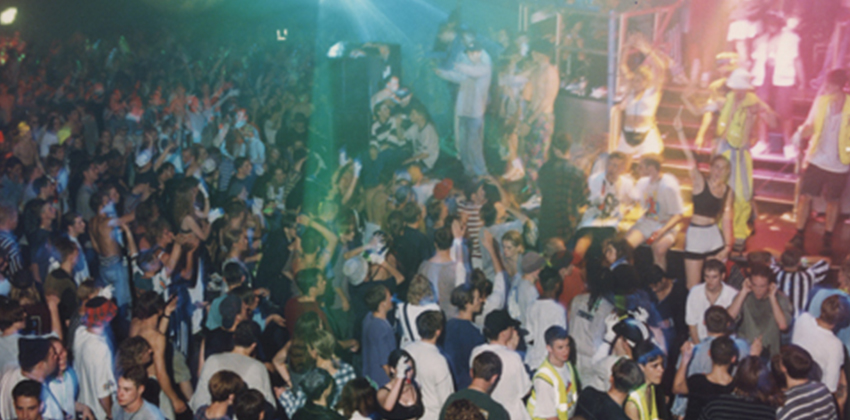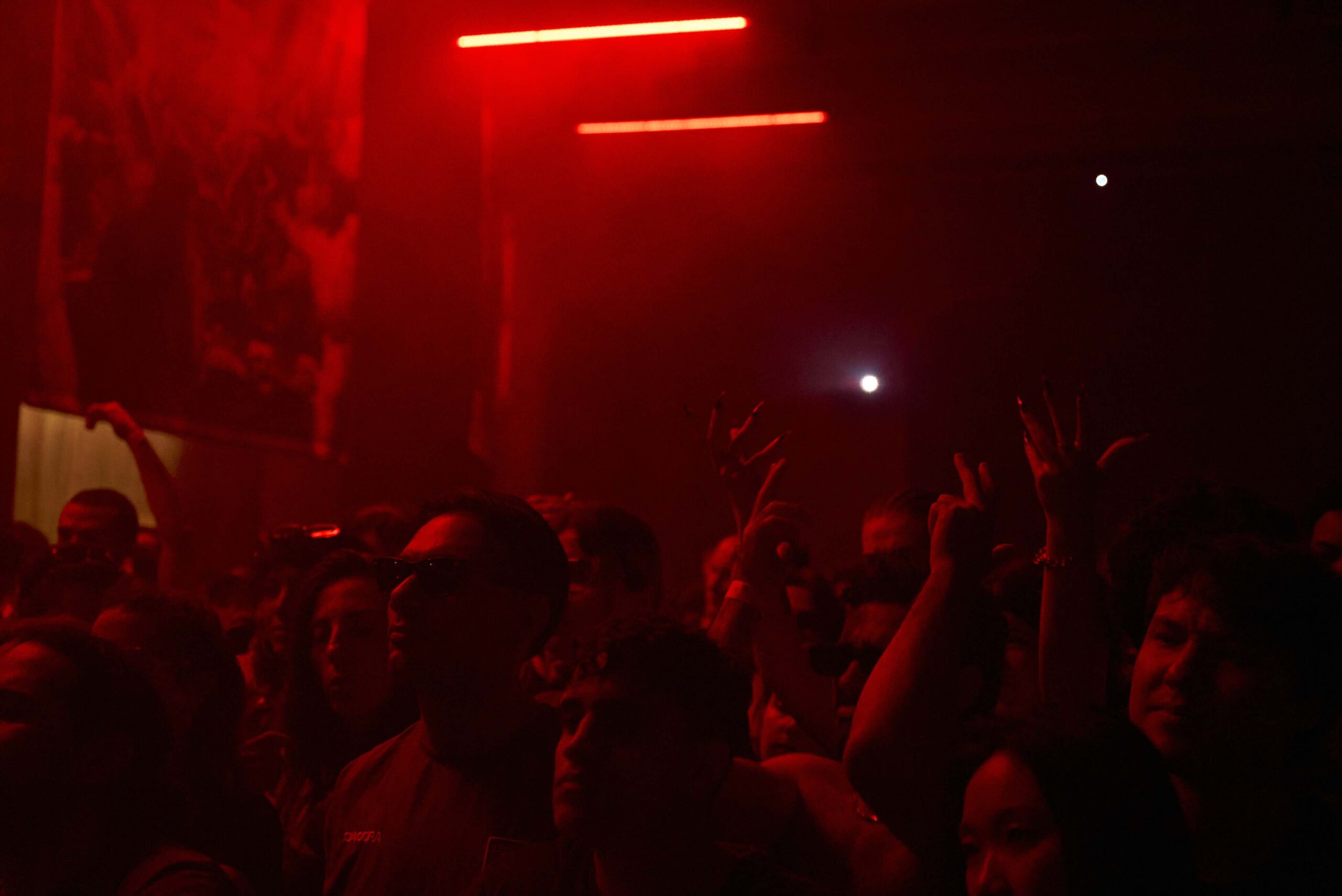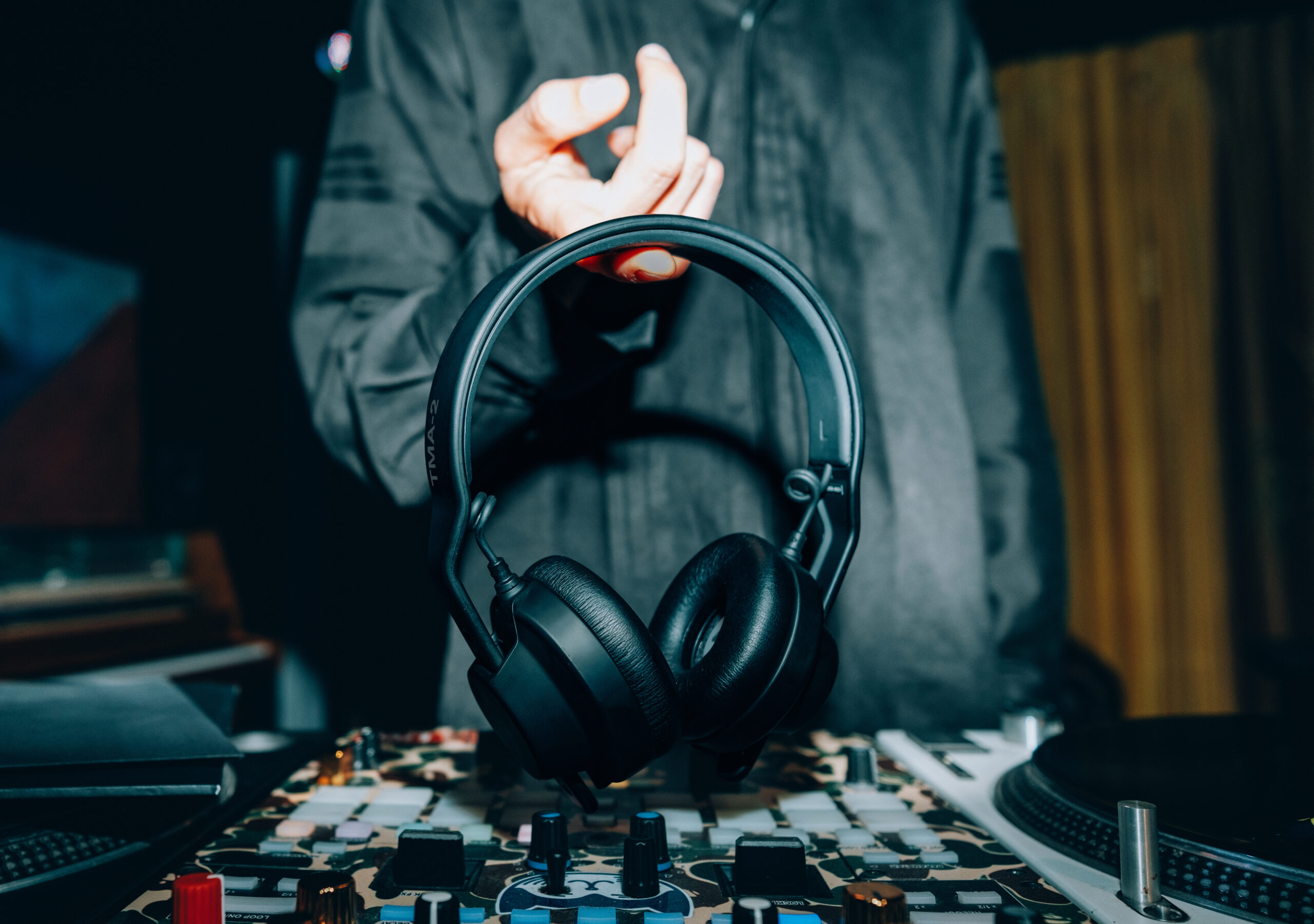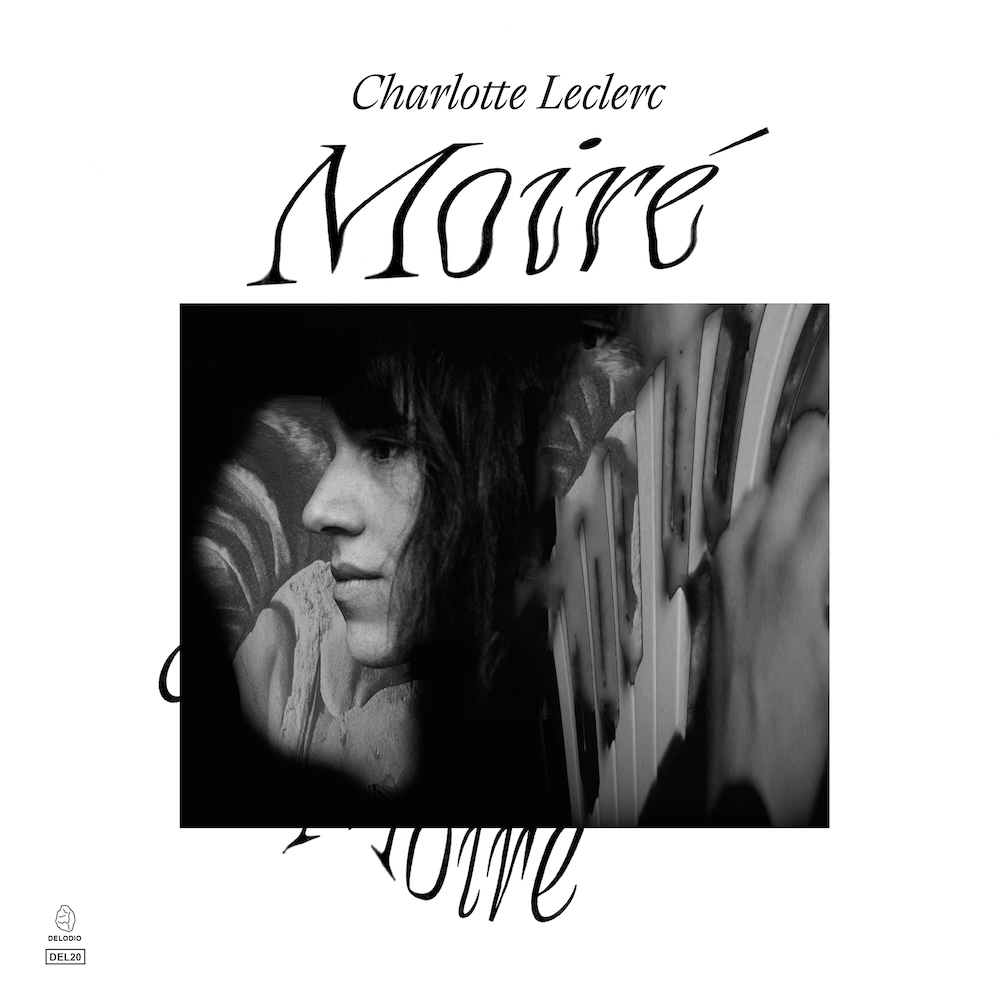Gone To A Rave #35: High On A Happy Vibe – The Rise And Fall Of Hardcore

This week is a first – I'm handing over the reigns of Gone To A Rave to Ian S, an old skool raver who got in touch and offered to write about the much maligned Happy Hardcore scene. Seeing as I know somewhere between little and zero about the nutty history of Happy Hardcore I was happy to take him up, and the lad has delivered in full. Here we have a round up of a scene's transition from early piano raving madness to full scale cheesy toytown hysteria, to near death and finally rebirth, with a good helping of dodgy business deals, shameless rip offs and missed opportunities along the way. Feel free to comment with some favourite Happy tunes below the article, some of the '94 stuff is undeniably ace and I'd love to know more…. Now over to Ian S …
The summer of 1992 was the peak for the rave scene in the UK. Huge outdoor raves every week, club nights all across the country, and the charts dominated by the hyper-speed music of the future. Hardcore was the music that was doing it; breakbeats, pianos, stabbing synths and hip-hop samples wrapped together at 140 BPM.
A group of DJs weren’t so happy with this state of affairs though. They thought that the music hadn’t progressed since 1991, the hardcore sound had homogenized and become stale, and the chart success was in danger of either commercialising the scene, or having people laugh it off as novelty cheese (a la Smart E’s notorious monster hit Sesame s’Treat). These DJs and producers started making darker, more technical records that had little hope of charting. Within a few months the happier sound had all but disappeared from the sets of London DJs, with darkness and screwfacing rushing in, and muttered rumours of crack smoking and in-rave-muggings dogging the scene. Hands-in-the-air loved-up abandon, ecstasy and smiley faces were old news. (McQuaid's note – for some serious darkcore, check this Shining sampling horror from Trip 1, complete with 'really really dark' and 'please don't hurt me' samples…)
Another group of DJ/producers – largely based outside of London – weren’t too happy with this. They wanted a sound that would bring back the long lost vibes (of 4-5 months previous), but there were almost no new records that would fit this style.
Then, seemingly out of nowhere, came a release with SMD Volume 1 written on it. At the time, no-one knew who was behind it, but it encapsulated exactly what these DJs wanted. It was harder and faster than the 92 style, with a bouncy 4/4 kick running alongside the breakbeat. It also featured familiar piano line for all the ravers, nicked from Jimi Polo’s “Better Days” (or Congress – 40 Miles if you aren’t familiar with the original. Soon, everyone would find out that the man behind it was Slipmatt, rave scene hero of SL2.
SMD – Volume 1
Slowly, other happier records were released: the lo-fi Amiga mayhem of Red Alert & Mike Slammer, the uplifting Sing It Loud by DJ Vibes, and the early releases on Luna-C’s legendary Kniteforce label showed the way to a happier future. The Jungle/Dark fraternity weren’t so enamoured though, they saw these releases as timewarp music for the out of date cheesy quaver, still basing their sound on samples of older house and hardcore tunes than pushing the limit of technology. Still on their ecstacy PLUR-vibe, whilst jungle was the sound of what was really happening on the street.
Vibes & Wishdokta – Sing It Loud
By mid-94, the happier sound had a network of clubs supporting it, a collection of labels pumping out exclusively happy tunes, and had found a receptive audience. The ravers tended to be at the younger end of the spectrum, drawn in by the rave tales of their older brothers and sisters, they’d last a few years before leaving hardcore to move to the more “grown-up” sounds of house or drum ‘n’ bass. The jungle/drum ‘n bass heads still sniffed at it, but it shared the stage with them at the big raves of the day, with main rooms at raves being a mix of both sounds, the top tier of the happy scene (Slipmatt, Sy, Seduction, Dougal & Vibes) sharing the decks with the likes of Bukem and Grooverider.
The biggest hit of the 94 era was Jimmy J & Cru-l-t’s (AKA Luna C – a former member of Smart E’s) 6 Days on Kniteforce’s sister label, Remix Records. It also represents one of the big missed opportunities for the happy scene, and a foreshadowing of what would come. As the track was a big hit on the rave scene, it attracted the attention of other labels. One such label was Paul Elstak’s Rotterdam Records. Elstak had been one of the producers responsible for the invention of gabba, the harder-than-hard sound that dominated raves in Holland & Belgium. After controversy regarding drugs deaths at gabba events, Elstak had decided to switch his sound to the lighter, happier variant of hardcore found in the UK. He was so popular that his records would frequently get into the top 10 in various European countries pop charts, and he wanted to license 6 Days for a European release. Whilst Jimmy J & Luna-C were mulling this over, Pete Tong contacted them, also wanting to license the records for the major label FFRR. With Tong’s backing the record stood a good chance of charting in the UK, and would lend the scene a good deal of credibility and recognition. They decided to turn down Elstak and continue negotiating with Tong. Elstak’s response was to rip-off 6 Days himself (although he of course was free to use the same uncleared samples) as Going Crazy by Rave Nation. Elstak’s version sold well all across Europe, but killed the FFRR deal for 6 Days. Alas, this would not be the first or last rip-offs to hurt the happy scene.
Jimmy J & Cru-l-t – 6 Days
Rave Nation – Going Crazy
1995 would come and the happy sound would continue to draw well at raves, settling into a formula of breaks, kicks, pianos and stabs….but not all the UK was dominated by this sound. The north of England and especially Scotland would have their own variant of hardcore, Bouncy Techno. Breakbeats hadn't caught on in Scotland, with one of their few D‘n B DJs, DJ Kid, risked getting bottled off everytime he tried introducing jungle to a Scottish rave. The bouncy scene was rawer than the southern hardcore, with a distorted bouncy kick drum, off beat cheesy stab and a rolling pianos. It was simple, but brutally effective. An interesting side effect of this was when the biggest rave in Scotland, Rezerection, would book Drum ‘N’ Bass DJs. Knowing their usual sound would not go down well, you can hear sets where the likes of Randall and Grooverider play unusually bouncy, piano heavy sets that would probably have earnt them a kicking at the Stratford Rex.
Meanwhile, down south, ravers were beginning to tire of what they saw as formulaic breakbeat hardcore. Labels like Kniteforce were being creative with their productions, but it seemed like too many other labels were making the tracks by numbers, knowing that the young, inexperienced and undemanding ravers would still lap it up. It was becoming stale and a change would have to come, but it would be a change that would simultaneously unite and divide the happy scene.
Hixxy was one of the scenes biggest DJs, and he also co-ran (with Dougal) one of scenes biggest labels, Essential Platinum. Sharkey was an MC, famous for being more off-it than most of the ravers he was MCing too. They teamed up in the studio and what came out would become one of the biggest anthem in the happy scene. Toytown had only the merest hint of breakbeat about it, featuring a bouncy kick and an ultra-cheesy stab pattern. The hardcore faithful across the UK loved it, considering it a breath of fresh air after the glut of breakbeat tunes. There was also a newer generation of ravers flooding into happy hardcore events, less wed to the past and the sound that went with it. Not all the ravers loved it however (me included!), not only due to the lack of breakbeats, but also the fact that it was considered “cheesy” rather than “uplifting”.
Hixxy & Sharkey – Toytown
With the release of this tune, the entire scene turned on its head. In the blink of an eye, breaks were out and kicks and cheesy riffs were in, and the labels that persisted with breaks floundered, then either adapted or died – even previous scene leaders like Kniteforce, which sadly stopped releasing tunes after putting out a few underwhelming 4/4 tracks. A lot of the breakbeat fans left the scene, but the renewed vigour Toytown had brought drew in younger ravers. Rooms at raves became more incongruous, with the new 4/4 style now completely at odds with the D ‘n’ B of the time. Some raves dropped one of the styles, or put them in totally different rooms, further limiting the types of sounds ravers would hear.
Thankfully, the Toytown phase was short-lived, with a lot of the tunes sounding like someone opening a musical novelty birthday card whilst smashing dodgems at a funfair. Within a few months a new sound would emerge, pioneered by the likes of Force & Styles. They had been part of DJ Force & The Evolution, one of the acts pioneering the happy sound on Kniteforce in 1993, but had since pared down to a duo. Their sound did away with the harsher, distorted kick, replacing it with a clean thud that many felt softened hardcore too much. They kept the uplifting pianos and off-beat stabs, but added full vocals to their tracks. These vocals would put a lot of people off, sounding, as they did, like Boyzone style pop ballads set to a hardcore beat.
These tracks were very successful however, and soon the hardcore ship had turned once more, with most producers now churning out this style of hardcore, seemingly at the expense of all others. One of the faults of the hardcore scene has long been that it doesn’t seem to be able to accommodate more than one sound at a time. Billy “Daniel” Bunter had tried to introduce trancecore to raves, a sound mixing hardcore with trance, and although his tracks were successful and pioneering, he eventually found more favour and respect in the hard house scene. The likes of Sy, Slipmatt and Demo tried to re-introduce breaks into the mix (as well as their 4/4 offerings), but again, even though the tracks sold well, they didn’t manage to alter the main course of the scene. A lot of the younger ravers would complain that breakbeats “weren’t hardcore” and that if you wanted them you should listen to DnB, regardless of the fact that the happy sound had been dominated by breaks only 2 years previously.
Around this time however, hardcore was once again given a chance to break into the charts. On the back of Force & Styles and their anthem Heart Of Gold, a track complete with its own soft rock guitar solo (which had only seen a limited 2,000 pressing), Muzik magazine had started to push happy hardcore as “the next big thing”. From being totally ignored by the media, suddenly one of the major magazine had a hardcore review column, Slipmatt was on the cover, and there were frequent mentions of how exciting this music was. Force & Styles were given an Essential Mix on Radio One, usually the preserve of the world leading house & techno DJs. To maintain this push, Heart Of Gold needed to chart. It was given a makeover by a pop production trio, Steelworks (think of a sub-par SAW), a new pop-dance vocalist Kelly Llorenna (of N-Trance fame) and a new label created to push them into the charts. Once again however, hardcore would blow it. Problems with the release saw it pushed back, and it failed to get into the top 40, stumbling in at a high point of no. 43. Almost overnight the mainstream interest dropped, with them favouring Speed Garage as the coming thing, and relegating hardcore back to half a page of reviews.
Force & Styles – Heart Of Gold
And here it is live at Wembley –
This seemed to be the death blow for the scene. Everything slowed down and the scene was left with pale imitations of Heart Of Gold and the 80s pop remixes put out by the likes of DJ Kaos (80s soft rock tunes sampled and stuck on a hardcore tune…fun, novelty tunes, but not something to base a scene on). Also, it seemed that a lot of the DJ/producer/label owners had closed ranks. For example, Seduction’s Impact label would only feature his own tunes, when he DJed he’d base his set on most of his own productions, which is what people would hear on the tapepack. When he was asked to mix a compilation, it’d feature most of his own tunes. This behaviour wasn’t just limited to Seduction, who I’ve used as an example, but was indicative of a lot of people on the scene. There wasn’t anything wrong with this behaviour, but in a small scene with relatively few producers, it seemed to stifle new talent and ideas.
The business practices would also come back to hurt happy hardcore, whether it be labels not paying artists, or distributors not paying labels. Strangely, for such a small scene, Japan would feature in two of the larger cases of this.
Japan has a fairly small, but loyal hardcore fanbase, but it was at major label level that hardcore seemed to breakthough. Major labels released there released huge selling compilations of what they call “Eurobeat”, essentially 4/4 dance pop records with simple, cheesy, catchy melodies and vocals (sound familiar?). A lot of these records made the likes of 2 Unlimited seem like Underground Resistance, but these compilations would sells hundreds of thousands of copies. Hardcore seemed like a perfect fit for it, and they made plans for a Dancemania Speed compilation featuring exclusively UK happy hardcore tunes. DJ Seduction was contacted to put the compilation together, and rather than pay royalties for sales he was given a wad of cash to make a one-time payment to each artist whose track would feature. Seduction duly delivered the tracks, but – allegedly – had failed to tell any of the artists about the release, and in those pre-internet days, none of the producers were any the wiser. He pocketed the money (again, allegedly), and quietly retired from the hardcore scene. The compilation would sell hundreds of thousands of copies (reputedly around 500,000).
Alphamagic were probably the leading distributor of happy hardcore in the UK (and the world). They had a reputation for perhaps being a bit slack with payment, but were really one of the only companies to go with if you wanted your tune distributed. Off the back of the success of the 1998 Dancemania Speed compilation, Japanese record shop, Q Records, had entered into a £10,000 a month buying contract with Alphamagic. This meant that around 50% of all the records being pressed in the happy scene were being shipped off to Japan. However, it’s doubtful that the UK labels were aware if this, as Alphamagic were allegedly pressing the records up themselves and trousering the cash. When Q Records got into financial difficulty in the late 90s, Alphamagic, who had been basing their business on the Japanese market, were screwed. They paid fewer and fewer invoices, and by 2004 they declared bankruptcy, leaving a trail of destroyed hardcore labels and artists in their wake, often out of pocket to the tune of tens of thousands of pounds. As Alphamagic sank, it took a fair chunk of labels with it. Here's a forum post on the affair from DJ Silver, a UK DJ pushing Happy Hardcore in Japan –
"in 95 / 96 a record store in Tokyo called Q-records with DJ Evil and Uraken working there opened, the concept of this store was to push happy hardcore and jungle in Japan, the happycore rave scene started around this time.
Q-records still has around 50,000 vinyl white labels brand new in boxes, I tried to make a deal to sell them in 2004 but they wanted like 15 dollars wholesale for them and vinyl, it was too expensive. So I passed on it
Since most of these records are white labels, actually nearly all of them, I suspect the then distributor Alphamagic used to press these secretly and sell them to Japan without the label knowing about it, I don't have proof and just my opinion, but over 600 copies (per release) white label seems quite alot for a white label press.
Q-records opened in 95-96 and distributed happy hardcore and drum n bass to Japan they were the only company to do it and distributed all over Japan, they went bankrupt in 2000-01 because they couldn't get out of their 10,000 pound a month buying contract with alphamagic, which most likely sent alphamagic bankrupt as well."
Alongside these misdemeanours, the hardcore scene was already on life support in the UK. By the late 90s a lot of the big raves had stopped running, nearly all of the regular club nights had closed, either due to lack of support or because of councils and the police cracking down on rave clubs. Records weren’t selling, and there were no new ravers replacing the one who had grown up and moved on. Future Dance held a rave at a 1,500 capacity venue, 70 people attended. Trance came along and the candy raving ‘Crasher kids out-raved rave, with huge parties every week, and catchy, uplifting tracks that you could hear on Top Of The Pops and buy in HMV, rather than going to a small, specialist dance shop to be laughed at for buying happy hardcore.
The hardcore tracks were again formulaic and dull, it’s hard to know if the producers (who were very talented) had just given up, or had become lazy due to the younger crowd willing to lap up anything as long as it was fast and sounded good on pills at their first rave. The hardcore fraternities tendency to shoot itself in the foot, combined with a lack of both invention and musical diversity, led to the near total disappearance of the scene. Ultimately, any scene that acts as a gateway into dance music for young people will always have peaks and troughs when those people move on to other forms of music. This was a trough.
No music ever truly dies though, and after a couple of barren years, by the early 00s hardcore returned, this time bolting the mainstream trance sound to beats at a 150bpm+ tempo – a style pioneered by Hixxy. It would again become hugely popular, with Slammin’ Vinyl returning to the Sanctuary in Milton Keynes in 2002. For many older happy hardcore ravers, the new sound had moved away from its roots – I suppose a similar comparison would be between big beat and breaks. These terms can be interchangeable for many, and most of the same people are involved in making and DJing it, but no-one refers to breaks as big beat anymore as it doesn't sound the same. It's one scene morphing into another, leaving the previous sound behind. Now a wealth of names are given to hardcore – Trancecore, Freeform, plain Hardcore, or Happy Hardcore. Whether the scene has learnt from the mistakes of the past remains to be seen….


















Must Reads
David Holmes – Humanity As An Act Of Resistance in three chapters
As a nation, the Irish have always had a profound relationship with the people of Palestine
Rotterdam – A City which Bounces Back
The Dutch city is in a state of constant revival
Going Remote.
Home swapping as a lifestyle choice
Trending track
Vels d’Èter
Glass Isle
Shop NowDreaming
Timothy Clerkin
Shop Now